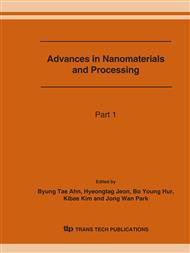p.1297
p.1301
p.1305
p.1309
p.1313
p.1317
p.1321
p.1325
p.1329
Effect of Adhesive Thickness and Bonding Length on Behavior of Composite Adhesive Joints Subject to Torsion
Abstract:
Combined thermal and mechanical analyses were used to investigate the effect of joint design parameters such as the adhesive thickness and bonding length on stress distributions and torque capacities of tubular adhesive joints with composite adherends. The finite element analysis was employed to calculate the residual thermal stresses due to fabrication, and the mechanical stresses were analyzed using the nonlinear analysis of tubular adhesive joints. The analyses reveal that the stacking angle, adhesive thickness and bonding length have a significant influence on residual thermal stresses, and consequently failure modes and joint strengths.
Info:
Periodical:
Pages:
1313-1316
Citation:
Online since:
June 2007
Authors:
Keywords:
Price:
Сopyright:
© 2007 Trans Tech Publications Ltd. All Rights Reserved
Share:
Citation:


